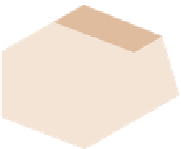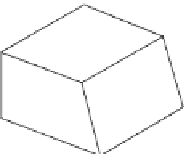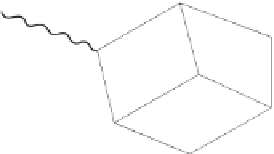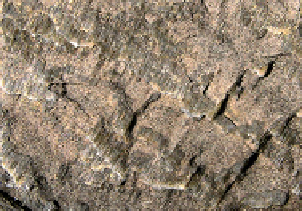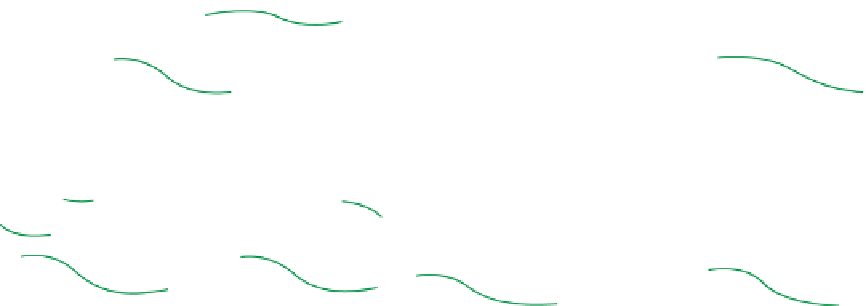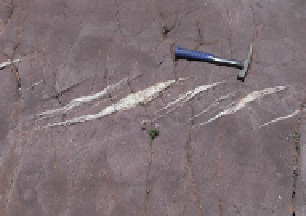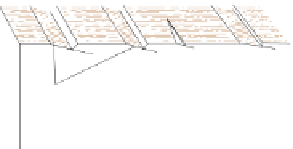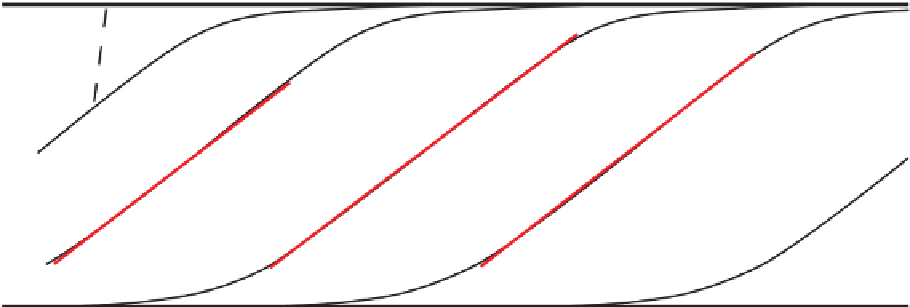Geoscience Reference
In-Depth Information
Figure 8.8
Matching corresponding piercing points, in this case where
a dyke (red) intersects a lithostratigraphic boundary, is the best method for
determining overall displacement on a fault. Linear features, such as a
river channel in a sedimentary succession, are quite rare in the rock
record. The most common type of situation is where two planar features
intersect along a line, as here.
piercing
points
8
secondary
steps
striated
secondary
fractures
striated
main fault
surface
(a)
(b)
(c)
R2
R1
riedels
Antithetic riedels
Shear bands
Fractured
grain
Fragmented
grain trail
Kink
bands
En-echelon tension gashes
(d)
Figure 8.9
(a) Arrows mark individual steps and indicate slip direction of the missing block on this slickenside
in southwest Wales, UK. Field of view 6 cm across. (b) Secondary fractures may develop that produce a stepped
effect opposite to that in (a). (c) The pattern of en échelon vein arrays indicates relative shear sense, confi rmed in
this example by the defl ection of dark solution seams through the shear zone that caused vein formation
(southwest Wales, UK). (d) Some features within a wider shear zone that can be used to diagnose sense of
shear (Riedel fractures, antithetic Riedel fractures, gouge fabrics, broken clasts). (a and c: Tom W. Argles, The
Open University, UK.)


